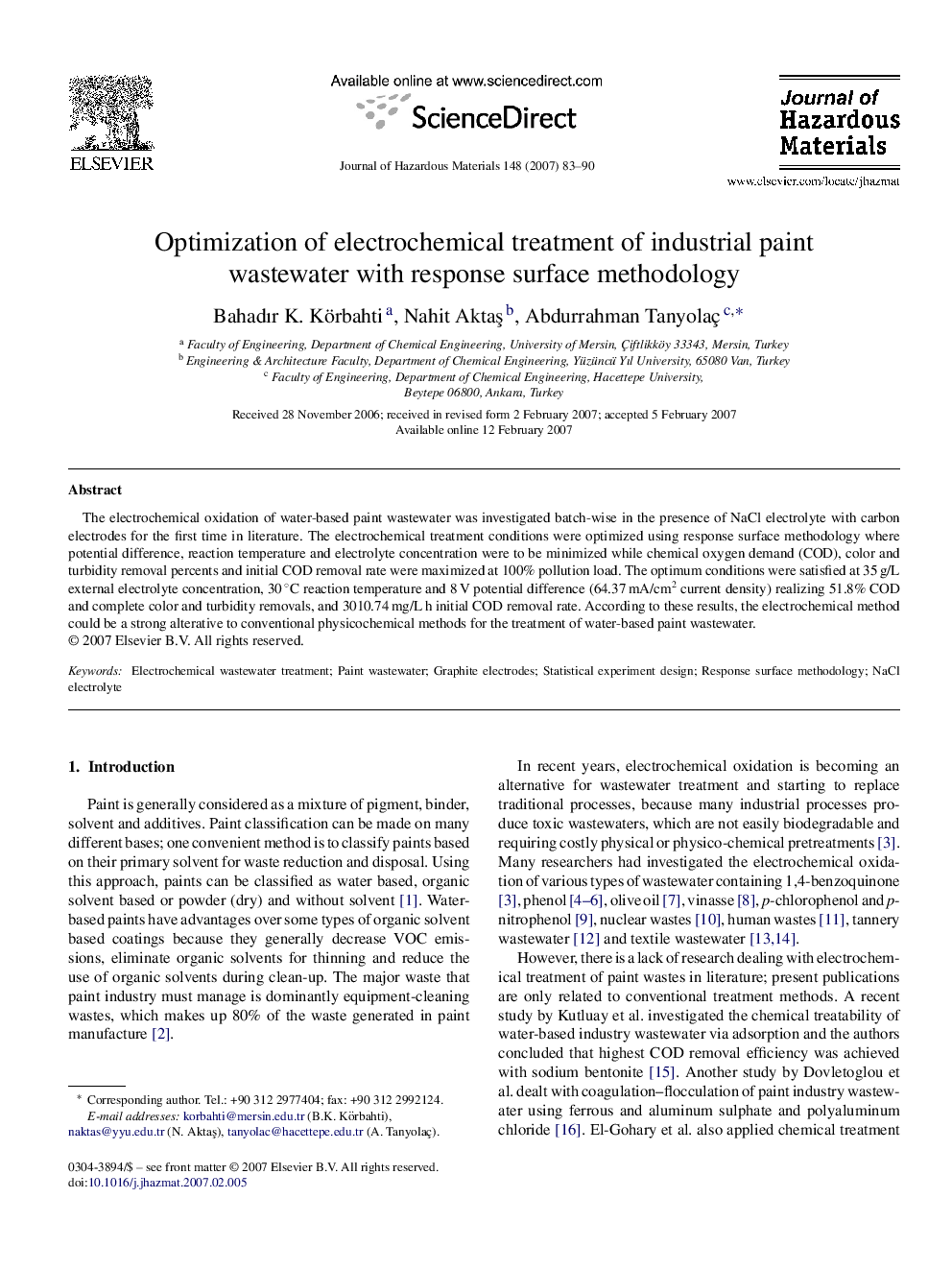| Article ID | Journal | Published Year | Pages | File Type |
|---|---|---|---|---|
| 584379 | Journal of Hazardous Materials | 2007 | 8 Pages |
Abstract
The electrochemical oxidation of water-based paint wastewater was investigated batch-wise in the presence of NaCl electrolyte with carbon electrodes for the first time in literature. The electrochemical treatment conditions were optimized using response surface methodology where potential difference, reaction temperature and electrolyte concentration were to be minimized while chemical oxygen demand (COD), color and turbidity removal percents and initial COD removal rate were maximized at 100% pollution load. The optimum conditions were satisfied at 35 g/L external electrolyte concentration, 30 °C reaction temperature and 8 V potential difference (64.37 mA/cm2 current density) realizing 51.8% COD and complete color and turbidity removals, and 3010.74 mg/L h initial COD removal rate. According to these results, the electrochemical method could be a strong alterative to conventional physicochemical methods for the treatment of water-based paint wastewater.
Keywords
Related Topics
Physical Sciences and Engineering
Chemical Engineering
Chemical Health and Safety
Authors
Bahadır K. Körbahti, Nahit AktaÅ, Abdurrahman Tanyolaç,
